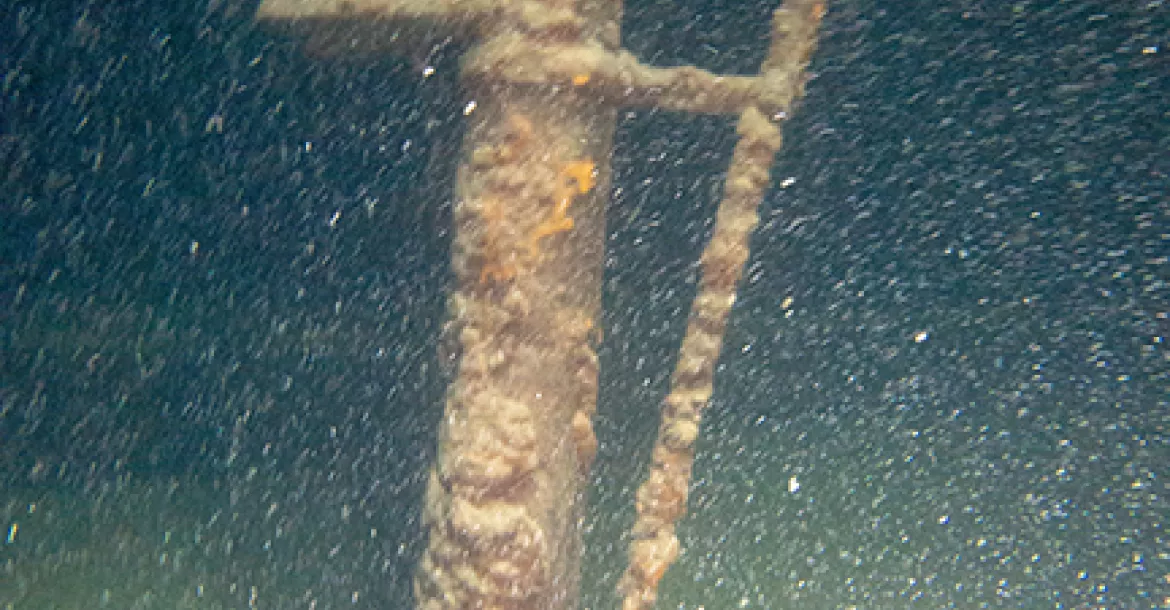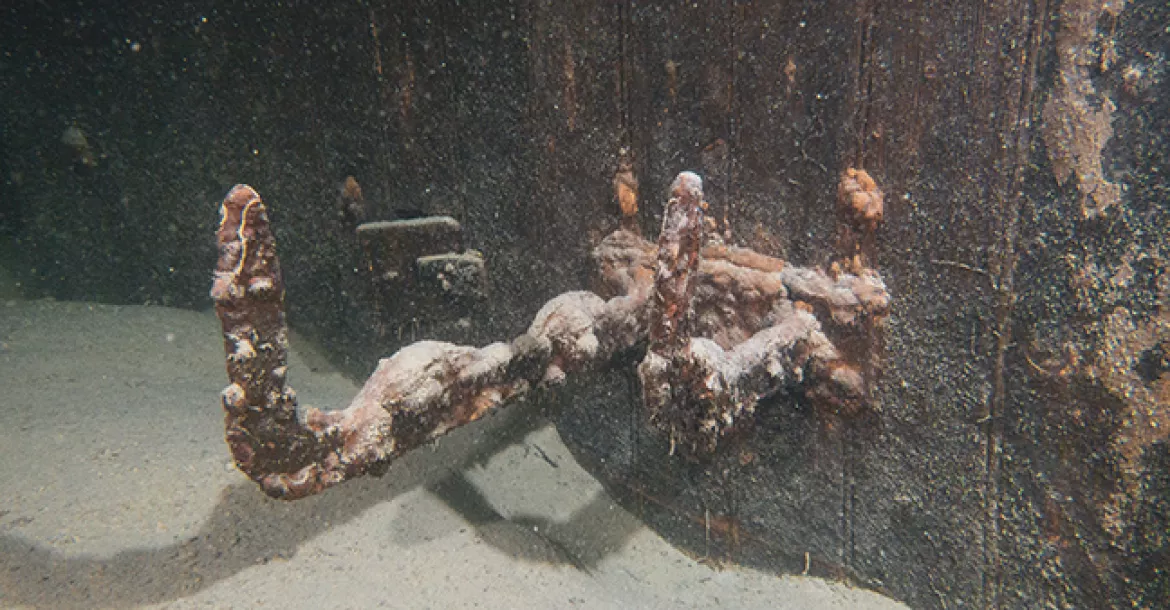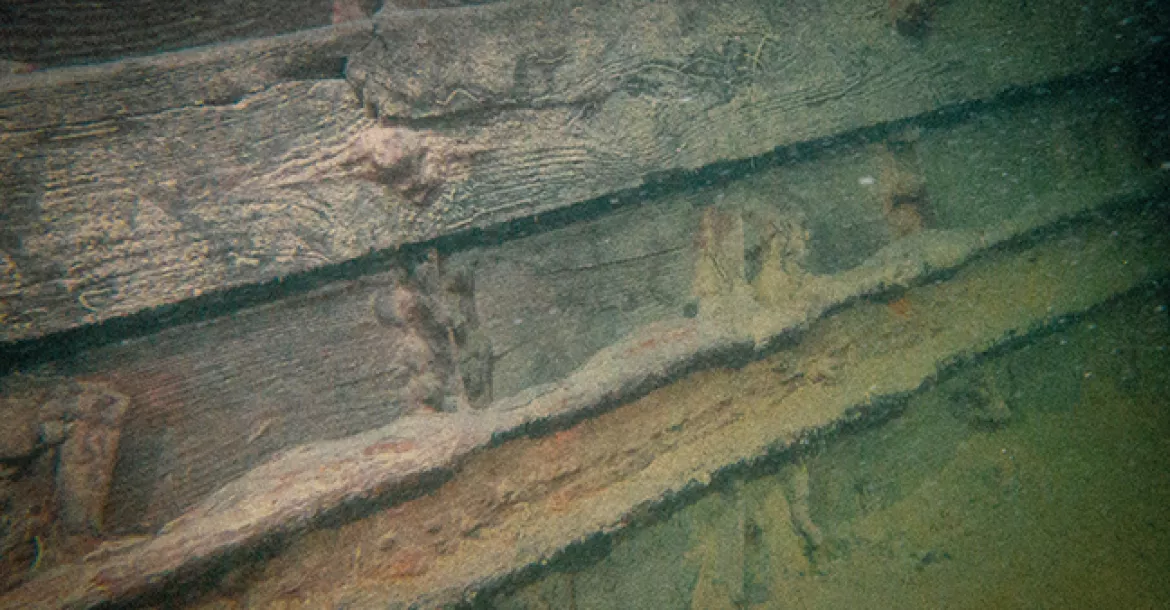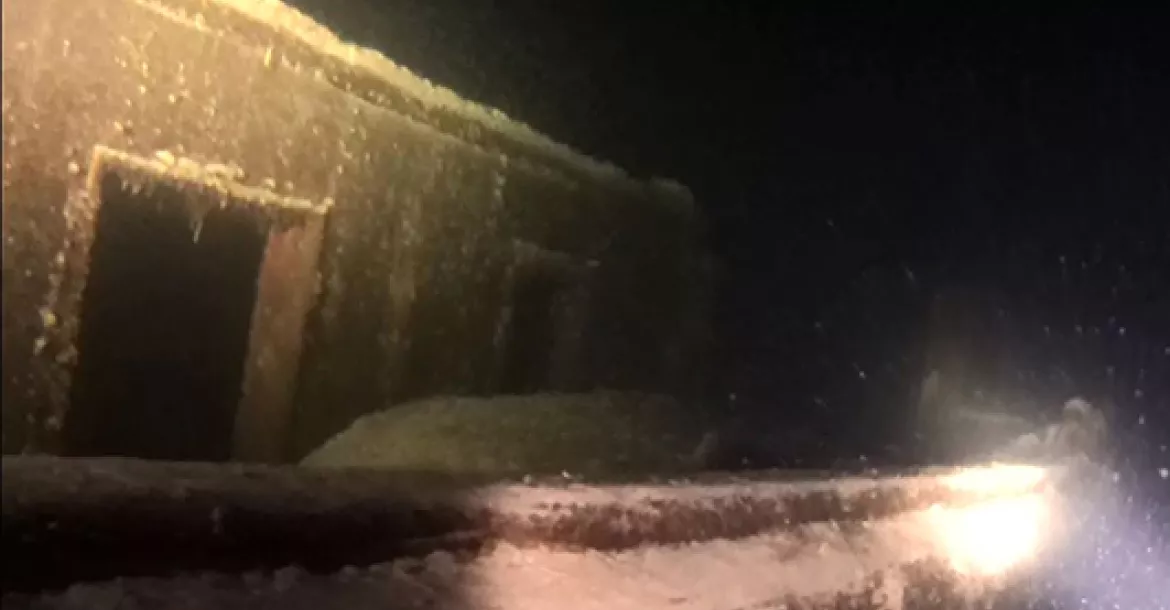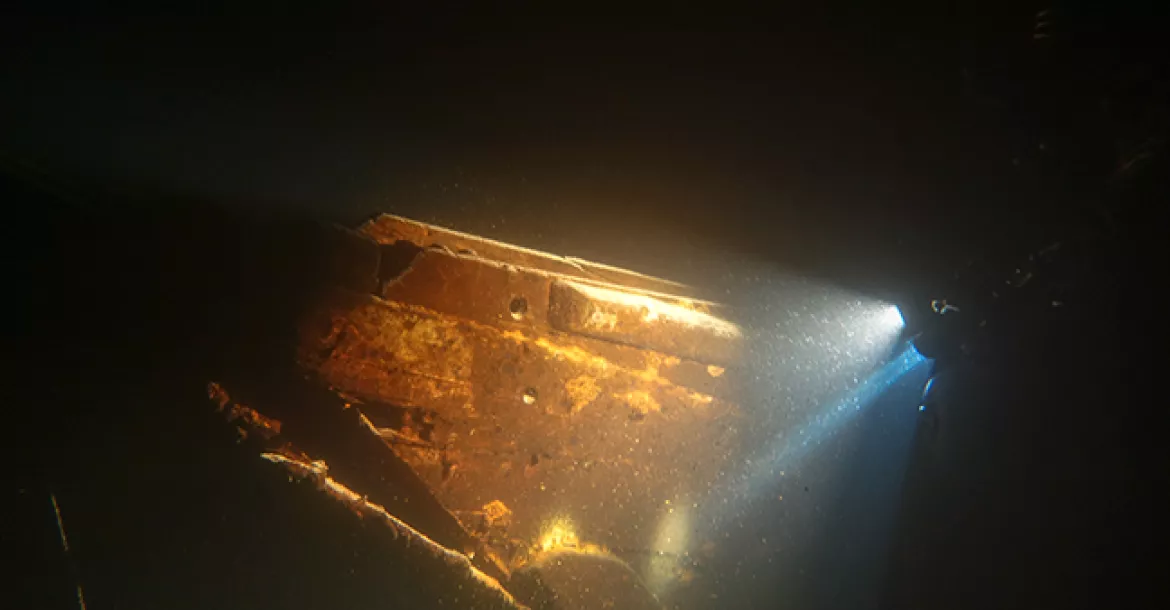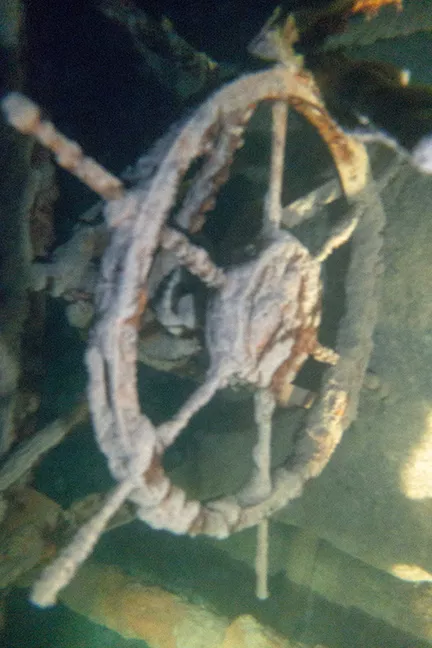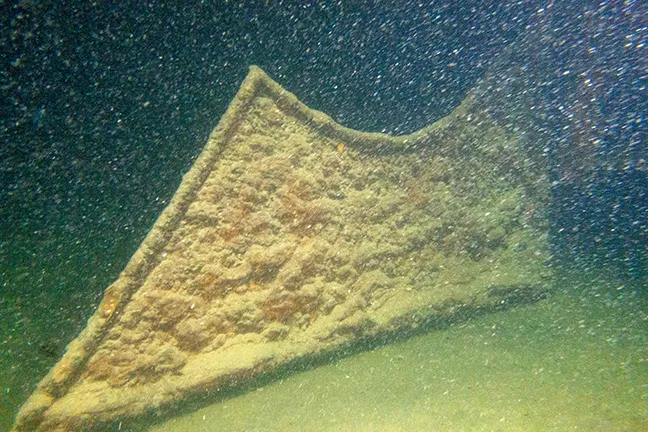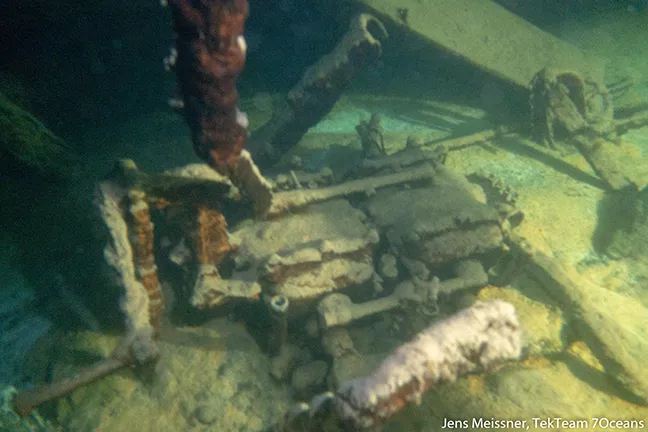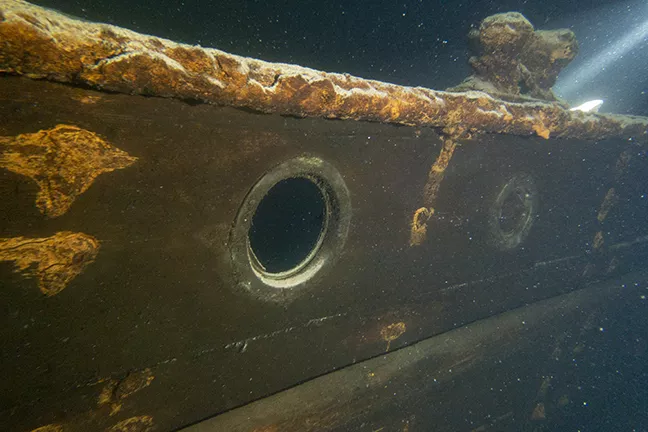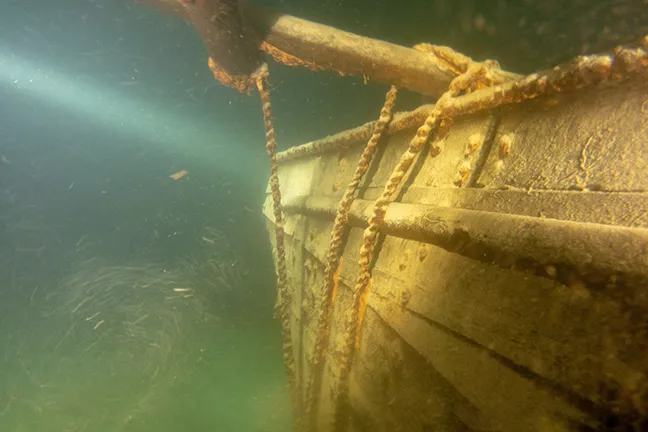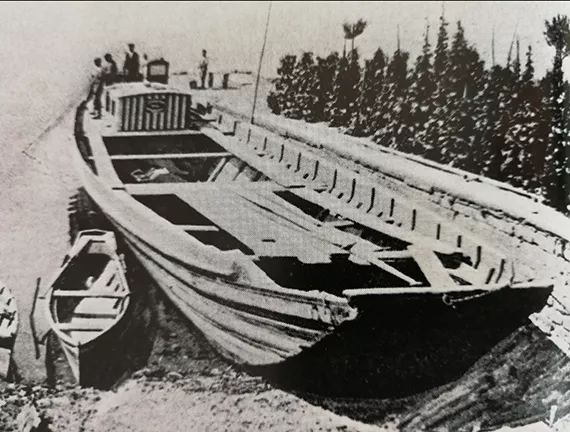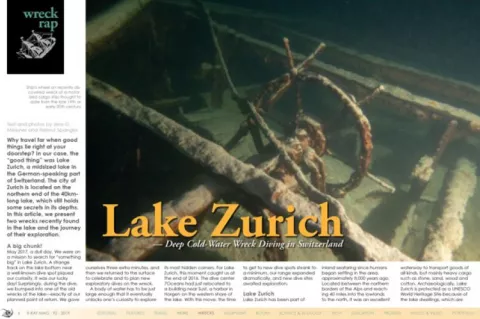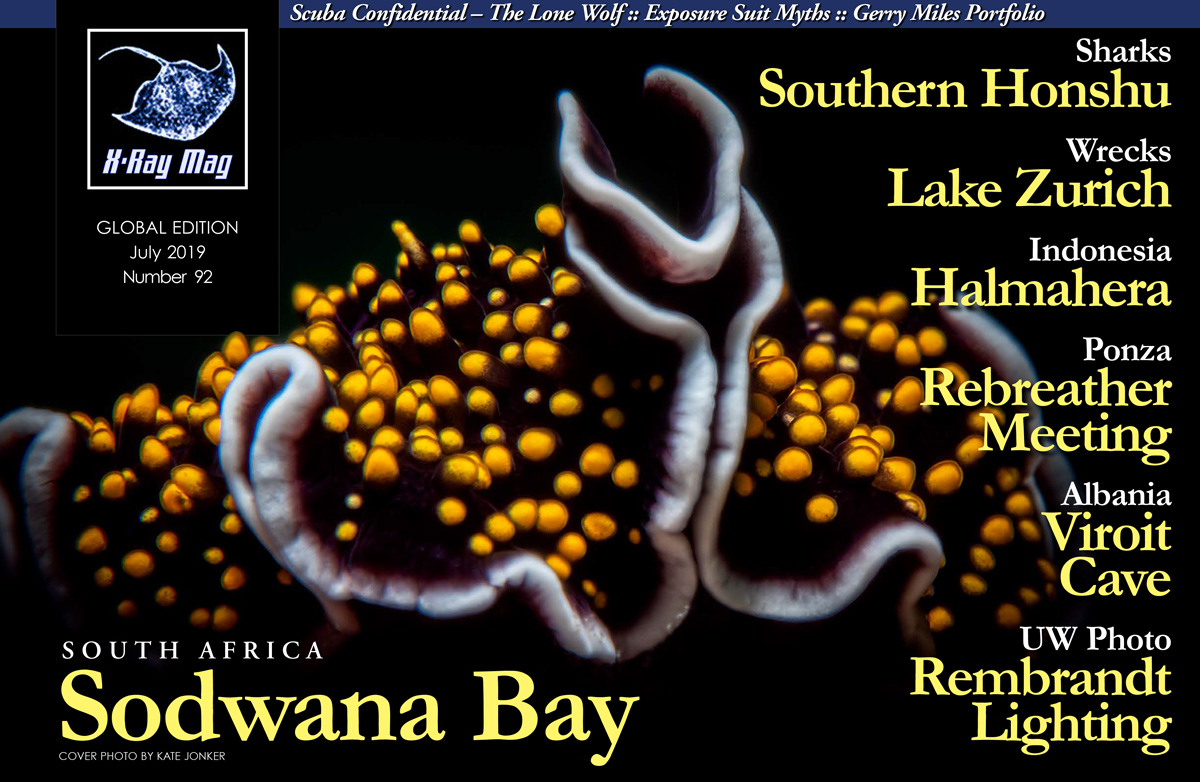Why travel far when good things lie right at your doorstep? In our case, the “good thing” was Lake Zurich, a midsized lake in the German-speaking part of Switzerland. The city of Zurich is located on the northern end of the 40km-long lake, which still holds some secrets in its depths. In this article, we present two wrecks recently found in the lake and the journey of their exploration.
Contributed by
Factfile
Jens O. Meissner is a lecturer of Organizational Resilience and Risk Management at Lucerne University of Applied Sciences and Arts, and a lecturer of Management at the University of St. Gallen in Switzerland. He researches management practices in technical diving as well as its inherent risks. He has dived since 1990 and is today a research diver and TDI instructor with 7Oceans in Horgen, Switzerland.
Helmut Spangler is the owner of 7Oceans, the only full-time technical dive center in Horgen at Lake Zurich in Switzerland. He is a TDI and SSI Instructor Trainer, as well as a DIRebreather Instructor.
May 2017, a dull day. We were on a mission to search for “something big” in Lake Zurich. A strange track on the lake bottom near a well-known dive spot piqued our curiosity. It was our lucky day! Surprisingly, during the dive, we bumped into one of the old wrecks of the lake—exactly at our planned point of return. We gave ourselves three extra minutes, and then we returned to the surface to celebrate and to plan new exploratory dives on the wreck.
A body of water has to be just large enough that it eventually unlocks one’s curiosity to explore its most hidden corners. For Lake Zurich, this moment caught us at the end of 2016. The dive center 7Oceans had just relocated to a building near Sust, a harbor in Horgen on the western shore of the lake. With this move, the time to get to new dive spots shrank to a minimum, our range expanded dramatically, and new dive sites awaited exploration.
Lake Zurich
Lake Zurich has been part of inland seafaring since humans began settling in the area, approximately 8,000 years ago. Located between the northern borders of the Alps and reaching 40 miles into the lowlands to the north, it was an excellent waterway to transport goods of all kinds, but mainly heavy cargo such as stone, sand, wood and cotton. Archaeologically, Lake Zurich is protected as a UNESCO World Heritage Site because of the lake dwellings, which are thousands of years old, located in the shallow waters along its shores. The rest of the dwellings found here date back to the sixth millennium BC and are intensively researched and documented by the respective cantonal (Swiss member state) departments of archaeology. But the cultural treasure also comprises up to 60 shipwrecks that are estimated to be lying on the floor of the lake, which is up to 136m deep.
We found the track on the lake bottom close to a well-known dive site known for its drop-off wall, and we were curious about what was lying down there. Just a couple of years ago, we found a wreck with a concrete hull near Horgen at a depth of 50m. Sadly, it sank during its launch ceremony, 100 years ago. But it has become a boon for divers who want to visit a completely preserved wreck—and is an excellent target for rebreather trimix dives.
Risk assessment
New dive sites always require new risk assessment, and solutions to mitigate the risks. In the case of Lake Zurich, the biggest operational risk was the shipping traffic. Zurich is a metropolitan area with one million inhabitants. Thus, passenger transports are very frequent at the northern end of the lake. It took quite a while to identify the time slots that allowed us safe decompression diving. Our wreck of a cargo ship (in Swiss, a Ledischiff) lay at the end of the track on the lake bottom, at around 75m depth. But the exploration was not a linear process (see Table 1).
As the exploration history shows, retrieving the wreck after the first discovery brought new problems. The lake floor quickly drops down to 65m, then flattens out to a maximum depth of approximately 90m at this site. The area at around 70 to 80m depth is 300m wide. The lake bed has slight hillocks, so navigation is a real challenge. At depth, it feels like one is in a dark desert as depth contours are missing, other landmarks are absent and maximum visibility never exceeds eight meters. Water is 4 to 5°C all the time, and the surrounding area is completely black.
Since landmarks were missing, compass navigation did not work very well. It was better to mark the area with guidelines, which were 30m in length each. The lines served as reference points for further exploration. The few landmarks that we found (i.e. diverse small vessels) helped us get a better overview. In the end, we could reach the wreck with a high likelihood of finding it. Our research and documentation of the wreck was conducted in cooperation with the Department of Underwater Archaeology of the Canton of Zurich.
The cargo wreck
The shipwreck measures 22m in length, six meters in width and approximately three meters in height. It has a cabin at the stern and a cargo area, which spans over the first two-thirds of it, with a beam pump in the middle. The ship has noticeable steering gear, with a rudder blade and winch behind the cabin. The winch could pull up the rudder to allow disembarking on the shallow banks of the lake. This type of steering gear was a special construction specific to this region and has only been found once before in Switzerland. The rudder blade has a typical curved form.
When the ship sank and hit the lake bottom, the interior collapsed, and the impact completely demolished the cabin. A further investigation of the details is pending. There is a good chance that this ship sank on 29 September 1858, when the steamship Rapperswyl rammed the cargo ship in dense fog at the village of Thalwil. Interestingly, the lake’s daily newspaper at the time reported that the ship and its cargo were salvaged a week after the event. The collision damage we found at the starboard bow exactly fits the description in the paper. However, a suspicious part in the cabin looks to be a driving shaft. If this turns out to be true, then this hypothesis is not correct. Ships had built-in Saurer combustion engines that first ran on petrol in around 1895, and this would give the wreck’s history a different time frame.
The following winter, we used the knowledge gained during our first explorations to optimize our skills in Horgen Bay, and we significantly increased our speed in laying lines. Who would have thought that we needed cave line techniques in inland waters? We needed these skills more than we thought we would in our next exploration.
One wreck never shows up alone
In 2017, a tip from the local lake police drew our attention to another suspicious wreck site near Thalwil. Since it is a metropolitan region, Lake Zurich offers the advantage that divers can potentially enter the lake anywhere, if permitted. During the first wreck exploration, we used a boat ramp. This second wreck site had a landing stage, occasionally used by a couple of swans, some bathers and a boating school. The place was the perfect spot to sort out all of our gear prior to the dive.
Again, preparations were made to avoid contact with any boat traffic during the dive or during decompression stops. Since Thalwil is a landing place for at least three regular shipping lanes, it was more difficult to find an open slot, but not impossible. Besides the passenger transports, the presence of fishing boats and tourist vessels make a direct ascent from a dive to the surface in the middle of the lake an unacceptable risk. Hence, our exploratory dives were clearly overhead dives. The shipping timetable in fall and winter opened up more safe opportunities for diving compared to the summer months. The best time to dive the site was brief and fell between late October until it got too cold for safe and convenient decompression stops in the beginning of December.
Both wrecks lay in the 4°C zone. During every dive, we spent up to 70 minutes in this temperature, which made heated undergarments necessary. It took around 25 minutes to get to the wreck. We limited our time there to a maximum of 15 minutes to keep the dive time within three hours, which we defined for ourselves for different reasons, namely risk, appetite, opening hours and family time. During this exploration, we learned our lessons and optimized the exploration speed significantly (see Table 2).
In this endeavor, we quickly started to lay lines, which guided us through the 10 to 20m section that usually has extraordinarily low visibility. This was especially annoying since at least a third of the decompression time was in this depth zone. There was also additional risk regarding safety during decompression stops or finding our way back to the entry point of the dive.
Anyone who experiences a decompression stop here, with nearly no visibility and the constant noise of heavy engines overhead, will confirm that this is an unnerving place. The high frequency of vessels of all kinds passing overhead is a constant challenge, since the northern end of the lake is a tourist destination and a recreational spot.
It was also an issue that anglers or anchoring boats tore out our ground lines at their attachment points. Thus, every dive started with an inspection of these important installations. Although local fishers did not use very sturdy fishing nets, it often happened that a ghost net would drift into the muddy waters. The risk of entanglement was definitely a factor, and we trained ourselves to handle a threat such as this. So far, we had managed to handle the risks of these dives successfully. With better planning and fewer gear malfunctions, our exploratory dives went much quicker than they did on the first wreck.
Motorized cargo wreck
The wreck at this site was 24m long, six meters wide and lay at a 60-degree angle on the relatively hard lake floor, below a 10m wall at around 80m depth. Everything was covered with silt and lake marl. This wreck was remarkable, since it was by far the best-preserved wreck that has been discovered in Lake Zurich so far. Again, the cabin covered a fourth of the length at the stern, whereas the rest comprised a cargo hold with three different segments. The unroofed cabin gave us a view and insight into the vessel’s interior life. It still had covered portholes in place. The middle of the cabin hosted a two-cylinder engine, which also drove the bilge pump. Additionally, it drove a hydraulic system that could open the bottom of the cargo hold in order to dump the cargo into the lake (whatever it was). The steering gear and the helm sat in place, but the rudder blade had been lost during the descent. The hull had a double wall and the space between was used for hydraulic pipes and storage of the rudders. The hull was accessible via two hatches, starboard and larboard.
The cabin showed traces of a fire. However, this could not have been the cause of the sinking of the vessel, because the hull of the ship was intact. Very often, ships’ crews would heat their cabins with hot coal embers or a small oven, and a fire could easily spread if a ship was caught in bad weather. This ship had a composite hull made of wood and a steel framework, a technique quite commonly used between 1830 and 1900. However, the built-in engine looked like a Sulzer two-cylinder gasoline engine. Sulzer manufactured these units around 1910 at a factory in Arbon, which would mean that this wreck was younger in age.
Conclusions
The research on these wrecks is ongoing. For both wrecks, the investigation is challenging, since ships on Lake Zurich were never named. Information about them may be available in more than ten different public or private archives around the lake. However, the documents are difficult to read and definitely not digitalized. So, until now, both wrecks have kept their secrets, including the original reasons for their sinking—the exact dates and description of the circumstances are still missing. We will continue to search further parts of the ships, which may help us with their identification.
The next step will be the investigation of the hydraulics and the engine of the second wreck. This is not a trivial undertaking, since these parts sit below an iron framework, which once held up the deck. Of course, we will produce more videos and photos to document the actual state of the wrecks and their details. Up to today, all our photographs and videography have been sufficient enough for documentation rather than presentation.
To summarize, we reiterate a few of the crucial aspects of our exploratory projects that led to the improvement of our resilience on difficult dives to achieving actual success in our explorations:
- Identification of adequate time slots for dives on the wreck sites. Not only did these time slots have to fit into our agendas but also into the “rhythm” of the lake and its recreational, commuter and shipping traffic.
- Aiming to improve our approach and to adapt to situations. In our case, it meant laying guidelines in risky passages of the lake in order to approach the dive sites more quickly, as well as return safely during decompression stops.
- Progressive approach: We made our way step by step, which prevented us from progressing too quickly in our explorations. We learned patience in coping with situational frustrations.
- Preparation routines: We completed our preparations for the dives several days prior to the dives themselves. We planned the dives with a lot of time in reserve, even though the dives took place at our doorstep.
- Training to cope with gear malfunctions and preparation of emergency scenarios, especially training of relevant skills during the off-season.
- Last but not least, close collaboration with local authorities, especially the local lake police and the Department of Underwater Archaeology of the Canton of Zurich. ■

